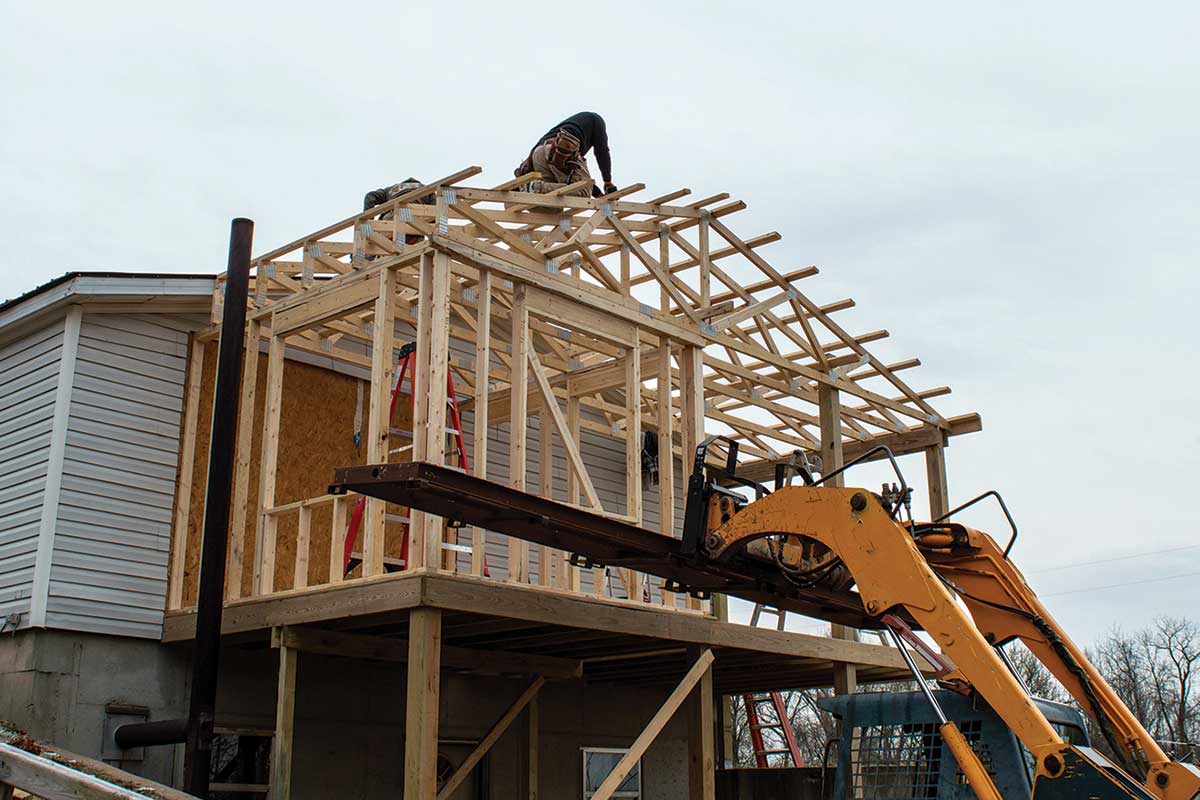You’ve had an eye on the perfect spot for your getaway cabin. The view—well, it’s breathtaking! But if you try to build your dream home too close to a power line, you may not live long enough to enjoy it.
Building your new home or barn where the roof is less than 8 feet from an existing power line or adding a swimming pool underneath a line is a dangerous idea. When you think about a builder hauling in materials and working in those areas and then folks using the pool or getting too close to the roof, it’s pretty scary.
Whether you’re a contractor or a do-it-yourselfer, always use caution when working near power lines, and never get closer than 10 feet to an overhead line.
Electricity flows through metal, wood, water and many other conducting materials, including human beings—all in an effort to reach the ground. Small birds can sit on power lines unhurt because they don’t create a path to ground. But you and your ladder do.
A line doesn’t have to be touched to spark danger; electricity can jump, or arc, from a power line to a person or equipment that gets too close. When equipment comes into contact with power lines, it becomes energized and dangerous.
Overhead power lines are not insulated. Touching a power line or an object in contact with one can result in serious injury—even death. Please contact your electric cooperative if you need to work near power lines so that we can help you stay safe.
Working too close to power lines is not only deadly—often it’s against the law. Texas has a statute in place, commonly called the 10-foot rule, requiring land owners to notify the local utility if any work will be done within 10 feet of a power line.
The U.S. Occupational Safety and Health Administration advises the best protection is lots of space. Don’t operate equipment around overhead power lines unless you are authorized and trained to do so. OSHA provides these general guidelines:
- When working near overhead power lines, use nonconductive fiberglass ladders.
- If an object (scaffolds, cranes, etc.) must be moved near overhead power lines, appoint a worker whose sole responsibility is to observe the clearance between the power lines and the object. Warn others if the minimum distance is not maintained.
- If an overhead line has been brought down by machinery or has fallen, don’t touch it—with anything. Never assume lines are dead.
- When a machine is in contact with an overhead line, do not allow anyone to come near or touch the machine. Stay away from the machine and contact your co-op immediately.
- If you’re in a vehicle in contact with an overhead power line, don’t leave the vehicle. As long as you stay inside and avoid touching outside metal, you should avoid being shocked. If you need to exit to summon help or because of fire, jump out without touching any wires or the exterior of the vehicle, keep your feet together, and shuffle to safety.


